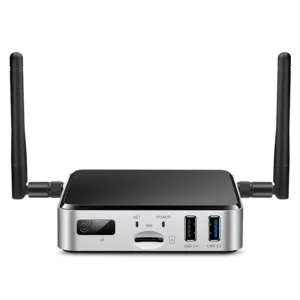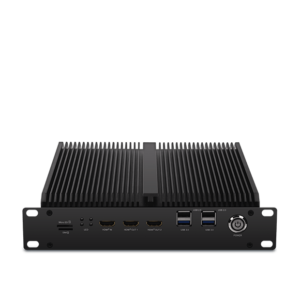A Extensive Guide to Deploying AI on Edge Devices
A Extensive Guide to Deploying AI on Edge Devices
Blog Article
Unlocking the Energy of AI on Edge Devices
Real-World Applications of AI on Edge Products
Artificial intelligence (AI) is no more confined to the sphere of large, centralized data centers. As a result of improvements in engineering, edge products today enjoy a key position in deploying AI immediately wherever knowledge is generated. But what does AI on edge devices mean, and exactly why is it making such a news? Here, we'll investigate how edge ai devices operates in the real world through edge devices and learn its wide selection of useful applications.

What's AI on Side Units?
AI on side products refers to deploying artificial intelligence formulas directly on devices like smartphones, cameras, drones, or IoT sensors. They do not want access to centralized machines for running information; as an alternative, they accomplish analysis and decisions locally, making the process quicker, better, and usually more secure.
The "edge" here just identifies computing performed near to or at the foundation of knowledge era, in place of relying on the cloud. That shift is pushed by the demands for real-time data control and the necessity to decrease latency, enhance privacy, and minimize bandwidth usage.
Crucial Real-World Applications of Edge AI
1. Intelligent Monitoring
AI-powered cameras equipped with facial recognition, activity detection, and anomaly detection are transforming security systems. Side units in this domain may analyze video streams in real-time to spot dubious activities, eliminate fake alarms, and enhance community safety. As an example, AI methods may find uncommon actions and attentive authorities quickly without the need to send video data to a central machine for analysis.
2. Healthcare Checking
Wearable units and portable medical equipment are leveraging ai m.2 module for managing health information more efficiently. Edge-based AI in products like wellness trackers and smartwatches screens users' vitals, such as for example heartbeat, air degrees, or body stress, in real-time. These techniques analyze data locally and offer immediate feedback, paving the way for quicker intervention during emergencies.
Beyond wearables, sophisticated medical imaging devices designed with on-device AI can find signs of conditions like cancer, allowing early in the day diagnoses even in remote parts without web connectivity.
3. Autonomous Vehicles
Self-driving vehicles are among probably the most well-known examples of side AI in action. With detectors, cameras, and LiDAR methods helping as information resources, AI computations get place onboard these vehicles to create split-second decisions. From sensing pedestrians and obstacles to moving town streets, side AI assures that the car works easily and efficiently. The real-time control convenience of side products removes the dependence on high-latency cloud systems, ensuring protection in life-critical scenarios.
4. Retail Analytics
Side products in retail settings are helping businesses analyze customer behavior. Clever racks and AI-equipped cameras may discover client preferences, monitor supply, and even modify in-store experiences in true time. The info produced from these units assists shops make educated decisions, increase customer satisfaction, and improve catalog management.

5. Professional IoT
Factories and commercial flowers are adopting side AI to revolutionize their monitoring and automation processes. AI-powered detectors on machinery detect possible faults well before they cause expensive failures. Predictive maintenance pushed by edge AI reduces downtime, enhances productivity, and assures safety on the production floor.
6. Individualized Activities in Client Units
Your smartphone is an excellent exemplory case of how edge AI personalizes consumer experiences. Functions such as voice personnel, flexible camera controls, and on-device language translation use real-time AI to answer person wants without sending sensitive data to additional servers. That fosters both convenience and solitude for the conclusion user.
The Growing Impact of Side AI
The adoption of AI on edge devices remains to surge, pushed by industries' raising demand for low-latency, real-time research, and greater information privacy. Its purposes are reshaping industries ranging from healthcare and automotive to public security and retail. By putting AI's energy closer to wherever data is developed, side units aren't only improving efficiency but also demonstrating the limitless potential of innovation in today's linked world. Report this page